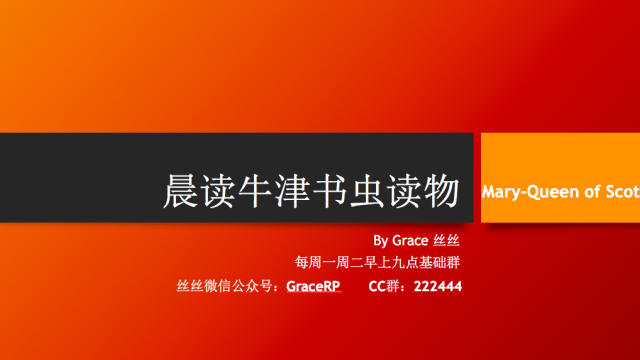外媒看中國(guó) 女人二十歲最愛吃零食
作者:滬江英語(yǔ)
來(lái)源:consultantforchina
2015-03-20 00:46
We found that the snack industry in China has been growing at a steady clip of roughly 15% annual growth. It was worth more than 200 billion RMB in 2011, and it’s forecast to be worth 480 billion by 2018.
我們發(fā)現(xiàn)中國(guó)的零食產(chǎn)業(yè)正在以每年約15%的速度穩(wěn)定增長(zhǎng)。在2011年零食產(chǎn)業(yè)的規(guī)模已經(jīng)超過(guò)了2000億元人民幣,預(yù)計(jì)到2018年,中國(guó)整個(gè)零食產(chǎn)業(yè)的規(guī)模將超過(guò)4800億元人民幣。
Is there any visible trend? What are the reasons behind that? What drive the growth?
是否有什么明顯的發(fā)展趨勢(shì)?是什么推動(dòng)中國(guó)的零食產(chǎn)業(yè)發(fā)展?增長(zhǎng)率的背后原因是什么?
Although growth is still significant, it has seen a steady decline in the past decade. Since 2004, the growth rates for sweets and chocolates have declined to about 10% currently, and similarly, instant noodles are down, although they still remain at roughly 20% annual growth this year. Fruit juice and soft drinks have seen their growth rates halved in the last three years. So as you can see, though the snack industry is still strong, it is suffering from an overall downward trend. As mainland Chinese consumers especially begin to have higher income and greater awareness of health issues, they are buying fewer prepared foods and snacks. Whereas five or ten years ago, instant noodles were a cheap source of nourishment, consumers now have more income to spend on better foods, and consume snacks mostly for instant satisfaction or energy.
整個(gè)中國(guó)的零食產(chǎn)業(yè)雖然增長(zhǎng)率依然喜人,但是在過(guò)去的十年里,其增長(zhǎng)速度已經(jīng)開始有所穩(wěn)步下降。相比2004年,甜食和巧克力市場(chǎng)的增長(zhǎng)速度已經(jīng)下跌了約10%,同樣方便面雖然依然保持著20%左右的增長(zhǎng)速度,但是增速在放緩。相比三年前,果汁和軟飲料銷量的增長(zhǎng)速度下降了50%。由此可見,雖然中國(guó)的零食產(chǎn)業(yè)依然興旺,但是正面臨整體下行的趨勢(shì)。中國(guó)大陸的消費(fèi)者收入增長(zhǎng),對(duì)健康的意識(shí)比以前更高,對(duì)預(yù)制食品和零食的購(gòu)買量有所下降。在5-10年前,方便面曾經(jīng)是中國(guó)大陸許多人廉價(jià)的營(yíng)養(yǎng)來(lái)源,但是現(xiàn)在消費(fèi)者有更多收入,可以用于購(gòu)買更好的食品,零食消費(fèi)對(duì)于現(xiàn)在的中國(guó)消費(fèi)者來(lái)說(shuō)只是滿足一時(shí)口福或者是補(bǔ)充能量。
Research sugggests that in the below-40s demographic, 88.5% of interviewees feel that snacks don’t offer any nutrition, and are particularly wary of those containing saturated fats and sugars. We can expect to see two main developments; first of all, more local producers addressing the snack market, and secondly, more nutritious, low-fat and health-oriented snacks.
研究發(fā)現(xiàn)中國(guó)40歲以下被訪者中有88.5%認(rèn)為零食不能提供營(yíng)養(yǎng),并且對(duì)含有反式脂肪和糖類的零食尤其擔(dān)憂??梢灶A(yù)見的主要發(fā)展趨勢(shì)有兩條,首先,更多中國(guó)本土的制造商會(huì)進(jìn)入零食市場(chǎng);其次,會(huì)涌現(xiàn)出更多有營(yíng)養(yǎng)、低脂的健康導(dǎo)向零食。
What kinds of snacks are more popular and who would buy more snacks?
哪種零食更受歡迎?哪些人購(gòu)買的零食更多?
Generally, chocolates and potato chips are the most popular “foreign” snacks, while instant noodles remain very popular as well. The greatest consumer demographic are the 22-35s, especially the females, as they can both afford to buy their own snacks, and tend to have busy and work (or study) dominated lifestyles that don’t allow for much cooking. Teenagers and young children are also a very large consumer groups.
雖然方便面的受歡迎程度依然不錯(cuò),但總的來(lái)說(shuō),巧克力和薯片是中國(guó)最受歡迎的“洋”零食。后兩者的消費(fèi)者年齡在22-35歲之間,以女性居多。這個(gè)消費(fèi)群體既能夠自己購(gòu)買零食,生活中工作或?qū)W習(xí)又占去非常多的時(shí)間,沒有太多時(shí)間做飯。青少年和兒童也是很大的消費(fèi)人群。
Will imported products/multinational brands more popular in China?
進(jìn)口商品和跨國(guó)品牌是否在中國(guó)更受歡迎?
Multinational brands dominate in China’s snack industry. The top 10 snack brands are Want-want, Kraft Foods, LIWAYWAY, DANONE, Wm Wrigley Jr Company, Dove, ORION, Xufuji and Jiashili. Of these brands, Wang-want and Xufuji are Taiwanese, accounting for 20% market share. Kraft Foods, LIWAYWAY, DANONE, Wm Wrigley Jr Company, Dove, ORION occupy 50% of the Chinese snack market together. Xufuji and Jiashili are domestic brands, and though they together account for 20%, they are still in the minority.
跨國(guó)企業(yè)確實(shí)占領(lǐng)了中國(guó)的零食市場(chǎng)。目前排名前十位的零食品牌為:旺旺、卡夫食品、上好佳、達(dá)能、箭牌糖果、德芙、好麗友、徐福記和嘉士利。其中臺(tái)灣品牌有旺旺和徐福記,市場(chǎng)份額占到20%??ǚ蚴称?、上好佳、達(dá)能、箭牌糖果、德芙和好麗友加起來(lái)占50%市場(chǎng)份額。雖然徐福記和嘉士利是本土品牌,但是加起來(lái)才只有20%市場(chǎng)份額,依然屬于少數(shù)派。
However, some domestic brands have the potential to increase their market share in the future. For example, Le Conte, Dali and Qinqin, as these brands know the needs of Chinese consumers better than foreign brands.
不過(guò)未來(lái)其它本土品牌的市場(chǎng)份額有上升趨勢(shì)。例如金帝、達(dá)利和親親等,因?yàn)檫@些廠商更懂得如何滿足中國(guó)消費(fèi)者的口味,這正是外國(guó)廠商所欠缺的。
What’s the position of China in Asia in this industry?
中國(guó)在整個(gè)亞洲零食產(chǎn)業(yè)中的比重如何?
In 2013, the growth rate of exports and imports of Chinese snacks increased significantly, with Brazil, ASEAN (Association of Southeast Asian Nations) and America acting as the three biggest foods trade partner. However, overall, China doesn’t have the same reach as Japanese snack producers, for example. Chocolate is the most popular snack in the Pacific area, and since chocolate is one area where China does not have a significant contribution to make to the market, it’ll be in other areas that China’s exporters could grow.
2013年是中國(guó)零食進(jìn)出口量激增的一年,巴西、東盟和美國(guó)是中國(guó)零食進(jìn)出口三大貿(mào)易伙伴。不過(guò)總體看來(lái),中國(guó)零食廠商還沒有達(dá)到日本廠商的水平。比如說(shuō),在太平洋地區(qū),最受歡迎的零食是巧克力,但是中國(guó)廠商在巧克力市場(chǎng)上占領(lǐng)的市場(chǎng)份額不是很多,所以,巧克力市場(chǎng)是中國(guó)零食出口的又一增長(zhǎng)點(diǎn)。
- 相關(guān)熱點(diǎn):
- 英語(yǔ)翻譯
- 英語(yǔ)雙語(yǔ)閱讀
- 傲慢與偏見第十八章











